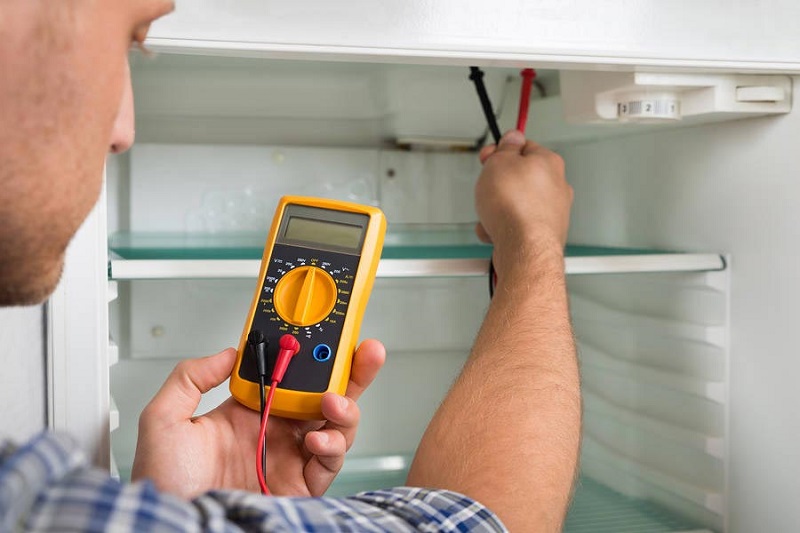Have you ever experienced the frustration of opening your refrigerator door only to find that it’s not as cold as it should be? A warm fridge can be a cause for concern as it can lead to spoilage of food and beverages, compromising their freshness and safety. In this article, we will explore the possible reasons why your fridge might be warm instead of cold, and provide you with some helpful tips on how to troubleshoot and resolve the issue.
Power Supply Issues
One of the first things you should check when your fridge is not cooling properly is the power supply. Ensure that the refrigerator is plugged in properly and that the outlet is functioning correctly. Sometimes, a loose connection or a tripped circuit breaker can cause the fridge to lose power or not receive adequate power, resulting in insufficient cooling. Find out how do you fix a warm fridge and cold freezer.
Temperature Settings
Check the temperature settings on your fridge. It’s possible that someone accidentally adjusted the temperature controls, causing the refrigerator to warm up. Ideally, the temperature inside the fridge should be set between 35 and 38 degrees Fahrenheit (1.7 to 3.3 degrees Celsius) to maintain the freshness of your food.
Blocked Air Vents
Blocked air vents can hinder the circulation of cold air inside the refrigerator, leading to poor cooling performance. Take a look at the vents located in the freezer and the fridge compartments. Ensure they are not obstructed by food items or other objects. Clear any blockages and allow proper airflow for effective cooling.
Condenser Coils
The condenser coils are responsible for releasing heat from the refrigerator, and if they are covered in dust or dirt, they may not be able to dissipate heat efficiently. Over time, this can result in reduced cooling capacity. Regularly clean the condenser coils, typically located at the back or underneath the fridge, to ensure optimal performance.
Faulty Evaporator Fan
The evaporator fan is responsible for circulating cold air throughout the refrigerator. If the fan is not working properly, the fridge may not cool effectively. Listen for any unusual noises coming from the refrigerator, as it could indicate a malfunctioning fan. If you suspect a faulty evaporator fan, it’s best to consult a professional technician to diagnose and repair the issue.
Refrigerant Leak
A refrigerant leak can significantly impact the cooling performance of your fridge. If there is a leak in the refrigerant system, the fridge may not be able to maintain cold temperatures. Look for any signs of oil or refrigerant stains near the refrigerator or a sudden increase in electricity consumption. If you suspect a refrigerant leak, it’s essential to contact a qualified technician to address the problem.
Damaged Door Gasket
The door gasket is the rubber seal that ensures a tight closure of the fridge door. If the gasket is damaged or worn out, warm air from the surroundings can enter the refrigerator, causing it to lose its coolness. Inspect the door gasket for any tears, cracks, or deformities. If necessary, replace the gasket to maintain proper insulation.
Overloading the Fridge
An overloaded refrigerator can restrict airflow and disrupt the cooling process. Be mindful of the quantity of items you store in your fridge, especially if it’s a smaller model. Avoid overcrowding and arrange the contents in a way that allows air to circulate freely.
Malfunctioning Thermostat
The thermostat regulates the temperature inside the refrigerator, and if it is faulty, it can lead to temperature fluctuations or an inability to maintain cold temperatures. If you notice significant temperature variations or inconsistent cooling, it’s advisable to have the thermostat checked and replaced if necessary.
Age of the Fridge
Lastly, the age of your refrigerator can contribute to its cooling performance. Older models may gradually lose efficiency and struggle to maintain colder temperatures. If your fridge is quite old and has been experiencing cooling issues, it might be worth considering investing in a new, energy-efficient model.
In conclusion, a warm fridge can be a cause for concern, but by troubleshooting the possible causes mentioned above, you can often identify and resolve the issue. Remember to check the power supply, temperature settings, air vents, condenser coils, evaporator fan, refrigerant system, door gasket, and thermostat. Additionally, avoid overloading the fridge and consider the age of your appliance. By taking these steps, you can ensure that your refrigerator maintains the proper temperature to keep your food fresh and safe.
FAQs (Frequently Asked Questions)
- How long does it take for a refrigerator to get cold?
Typically, it takes a refrigerator about 24 hours to reach its optimal cooling temperature after initial setup or after being left unplugged for an extended period. However, the time may vary depending on the model and environmental conditions.
- Is it normal for the sides of the fridge to feel warm?
Feeling warmth on the sides of your refrigerator is normal. The condenser coils are located there, and they release heat as part of the cooling process. However, if the heat feels excessive or there is a sudden increase in temperature, it could indicate a problem that requires professional attention.
- Why does my fridge work but not the freezer?
If your fridge is cooling properly but the freezer is not, it could be due to a variety of reasons such as a faulty defrost heater, a blocked airflow, or a malfunctioning evaporator fan. It’s recommended to have a professional technician diagnose and fix the issue.
- Can placing hot food in the fridge damage it?
Yes, placing hot food directly in the fridge can raise its internal temperature and make it work harder to cool down. It’s best to allow hot food to cool to room temperature before storing it in the refrigerator.
- How often should I clean the condenser coils?
Cleaning the condenser coils at least once or twice a year is recommended to maintain optimal performance. However, if you have pets or live in a dusty environment, more frequent cleaning may be necessary.






